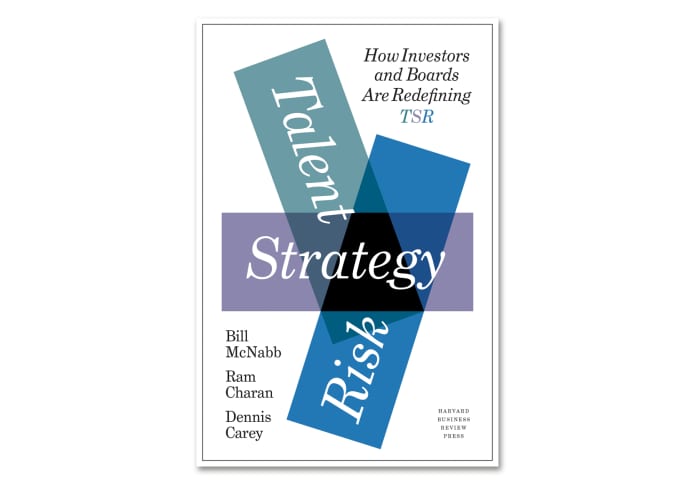This post was originally published on this site
For investors, the standard measure of corporate performance is total shareholder return, or TSR — the change in a company’s share price with accumulated dividends over time. For boards and for managers, chasing after TSR can put a premium on short-term activities designed to boost the company’s stock. The pressure to do so may come from security analysts and the business press, and from activist investors when they think that a company is lagging its market potential.
Yet a focus on TSR brings with it no rules of behavior. Despite their best efforts to build total return, companies continue to make ill-advised mergers, invest in dead-end lines of business, and hire chief executives unsuited to the changing business landscape, all of which hurt shareholders.
Companies got in these straits through shortsightedness, inconsistency, and a focus on the wrong achievements. Companies typically judge each value-creating initiative by its own set of measurements — eyeballs for a content initiative or inventory levels for a manufacturing effort — rather than by a single set of meaningful financial metrics, such as gross margin, revenues, cost reductions, and asset utilization.
Timetables are often fuzzy, and accountability for delivering results is typically diffuse, with initiatives placed in the hands of project leaders asked merely to finish the job. CEO pay is often tied to short-term results, not to the success or failure of the seed projects on which the company’s future depends. And many boards are oblivious to what management is doing to prepare for the future. All these endemic faults are enemies of long-term value creation.
It’s time for companies — led by their boards — to refocus their attention on a new imperative. From the perspective of permanent capital and long-term value creation, we think the best way to create total shareholder return is by focusing on talent, strategy, and risk — the new TSR.
By that we mean first attracting the right talent—the people who will want to stay, grow, and evolve with a comapny, then creating a strategy that aligns the company not with Wall Street expectations but with the interests of the longest-term investors, and finally, owning at the board level all of the risks that could get in the way of strategy.
The shift to the new TSR began with investors. As index funds began to assume a more active role in corporate governance, they started to zero in on how management and boards dealt with key corporate functions, such as selection of the CEO and the leadership team; the steps management is taking to ensure that proposed mergers or changes in strategic direction are worth making; and the measures companies adopt to mitigate and take advantage of risk. In other words, they are looking at talent, strategy, and risk directly, both to protect the company and to enhance its value.
So how did we settle on these three elements as the rightful focus of the board instead of the traditional measure of total shareholder return? Our insight is that an increase in shareholder value is merely an output — the result that managers wish to achieve. We wanted to step back and look at the inputs that generate this output. And the trio of talent, strategy, and risk encapsulate the work of a company, broken down into its discrete functional elements — the functions the CEO must manage and that the board must oversee to enhance long-term shareholder return. The new TSR is a tool that boards can use to escape from short-termism and reorient for the long term. If the board can get the new TSR right, the old TSR will take care of itself.
Moving away from short-term thinking
The rewards of this new conception of TSR go beyond market gains. Boards can help create a better measure of shareholder value: long-term growth that will benefit both shareholders and society at large. Investors often view social benefits as contrary to financial results — that initiating, say, a zero-carbon strategy will mean higher costs and lower profits. In the short run, that may be true. But such a focus can deliver long-term gains — from future savings and the creation of new lines of business, and from the higher value people will increasingly place on companies that pursue such goals.
Until now, the loudest voices have been skewed toward the near term, and corporate practices have reinforced that perspective. The sanctity of earnings per share, combined with the rhythm of budget and operating reviews, ensures a high degree of myopia. In spite of efforts to balance incentive pay and performance, compensation is still based largely on short-term measures.
In addition, the security analysts who evaluate companies are themselves rewarded for short-term performance. And though shareholder activists are increasingly diverse and have varied time horizons, some are more adept than others at commanding management’s attention.
The good news for companies is that institutional investors — the ones who hold some 50% to 60% of the stock of Fortune 500 companies — have found their voice, and they are urging boards to serve as a counterbalance to this short-termism.

Harvard Business Review Press
Bill McNabb is former Chairman and CEO of Vanguard Group, the mutual fund giant. Ram Charan is a veteran management expert and adviser to CEOs and boards of the world’s top companies. Dennis Carey is vice-chairman of Korn Ferry.
Reprinted by permission of Harvard Business Review Press. Adapted from “Talent, Strategy, Risk: How Investors and Boards Are Redefining TSR” by Bill McNabb, Ram Charan, and Dennis Carey. (Harvard Business Review Press, 2021).
More: Smart stock investors know to check this telling sign of a company’s health
Also read: 10 stocks that have what it takes to be a ‘perfect’ company


